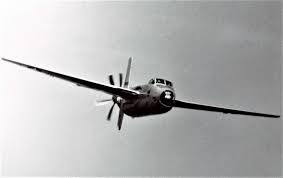seruriermarshal
ACCESS: Top Secret
- Joined
- 4 May 2008
- Messages
- 1,180
- Reaction score
- 574
To reach 180-205 kt in level flight is not an easy task with a conventional helicopter, but indeed feasible (G-LYNX).
However, to demonstrate that speed with an experimental aircraft is one thing. But to deliver an operational helicopter capable of 180 kt cruise speed is something very different. In the end fuel burn at given cruise speed may be an important factor.
FARA first look #1 - @Sikorsky Raider-X proposal for @usarmy Future Attack Reconnaissance Aircraft - 20% larger than S-97 Raider, side-by-side cockpit, large internal weapons bay, single @geaviation T901, redesigned rear fuselage
To reach 180-205 kt in level flight is not an easy task with a conventional helicopter, but indeed feasible (G-LYNX).
However, to demonstrate that speed with an experimental aircraft is one thing. But to deliver an operational helicopter capable of 180 kt cruise speed is something very different. In the end fuel burn at given cruise speed may be an important factor.
FARA first look #2 - @karem AR40 active-rotor winged compound - electric individual blade control, swiveling tail-rotor becomes propulsor, speed 210kt+, partners @northropgrumman for production and support, @raytheon for mission system
Karem, always good for a surprise!FARA first look #2 - @karem AR40 active-rotor winged compound - electric individual blade control, swiveling tail-rotor becomes propulsor, speed 210kt+, partners @northropgrumman for production and support, @raytheon for mission system

but they are keeping quite about their bid so that's sort of strange. It's certainly not the type of program that you want to throw in fancy tech that you don't have any hardware to show for.I am going out on a limb that Boeing will likely be rather conventional in their offering. Have not seen any significant innovation out of them in a long time when it comes to rotorcraft.
FARA first look #2 - @karem AR40 active-rotor winged compound - electric individual blade control, swiveling tail-rotor becomes propulsor, speed 210kt+, partners @northropgrumman for production and support, @raytheon for mission system
That looks like a whale.
My exact thought too. I am now only wondering why they went 3 blades on the rotor. Is it possible that the rotor stops during high speed cruise?I actually like the Karem submission the best, so far, as it looks the cleanest of all of the designs. I also like their tail rotor design solution.
Another pic... I like the compactness of this concept.FARA first look #2 - @karem AR40 active-rotor winged compound - electric individual blade control, swiveling tail-rotor becomes propulsor, speed 210kt+, partners @northropgrumman for production and support, @raytheon for mission system
so who'll win the FARA ?
1 Sikorsky Raider-X
2 Bell 360 Invictus
3 Karem AR40
4 AVX Aircraft CCH
5 Boeing
6 No one
Looks like a flying submarine.I am starting to like Karen’s design a lot.View attachment 620220
I would like to see a fly-off between 1 and 3. Very unlikely however.so who'll win the FARA ?
1 Sikorsky Raider-X
2 Bell 360 Invictus
3 Karem AR40
4 AVX Aircraft CCH
5 Boeing
6 No one
I am starting to like Karen’s design a lot.View attachment 620220

My money is on Bell taking FARA and Sikorsky taking FVL. Bell seems to be the lowest risk design and they have plenty of experience in this realm.so who'll win the FARA ?
1 Sikorsky Raider-X
2 Bell 360 Invictus
3 Karem AR40
4 AVX Aircraft CCH
5 Boeing
6 No one
The U.S Army has selected GE’s T901 engine for the Future Attack Reconnaissance Aircraft (FARA) program. One of the helicopters competing to be the Army’s next-gen light attack solution is the Sikorsky Raider X. Learn more from test pilot Christiaan Corry. #AUSA2019 pic.twitter.com/8KgJTxcpEu
— GE Aerospace (@GE_Aerospace) October 17, 2019
